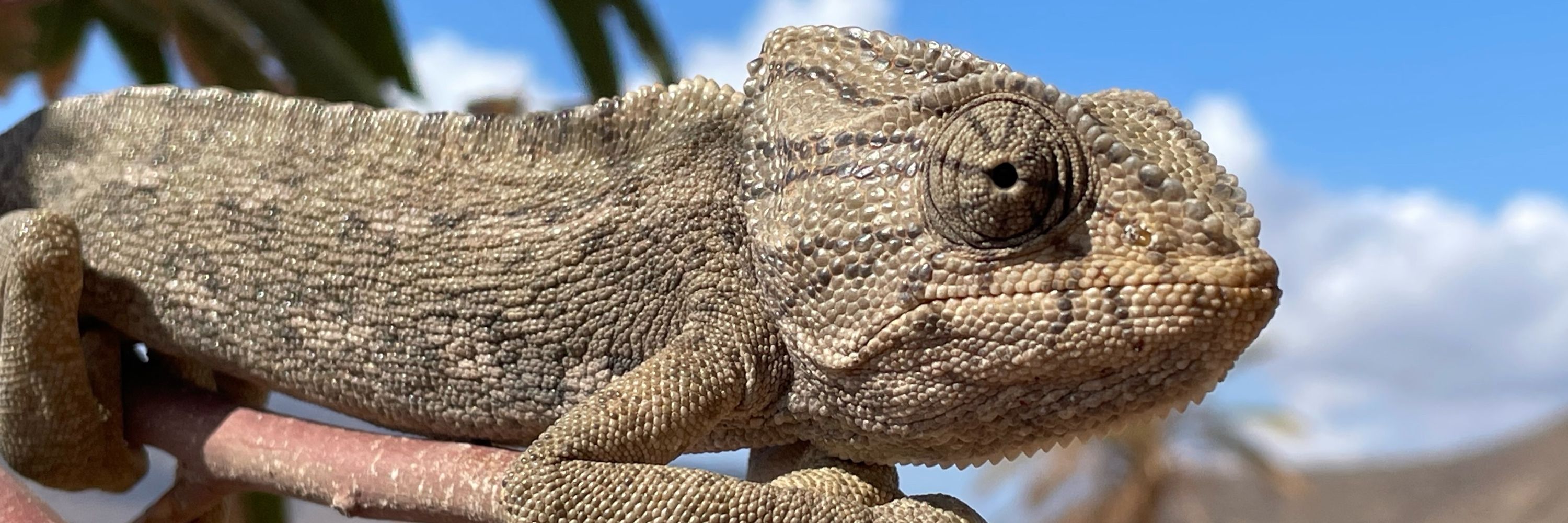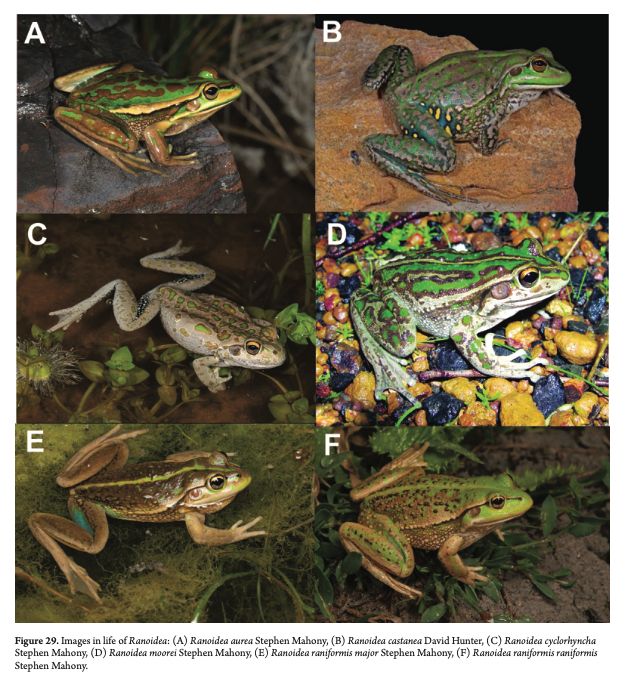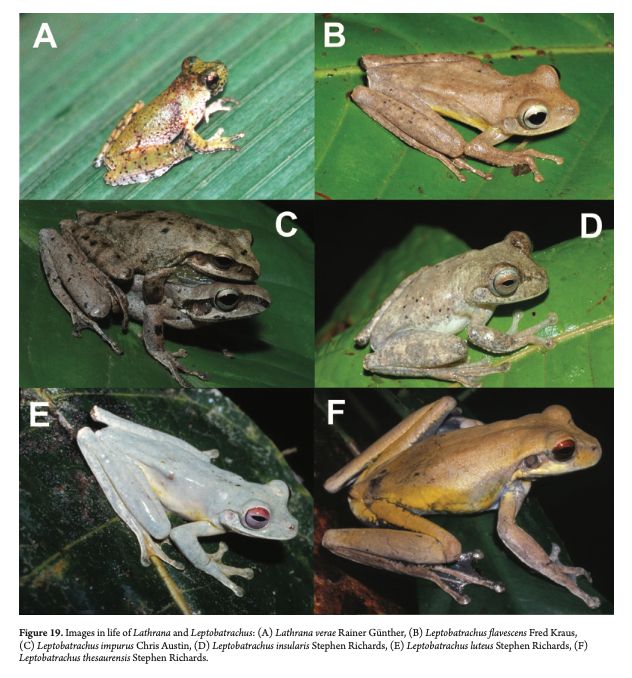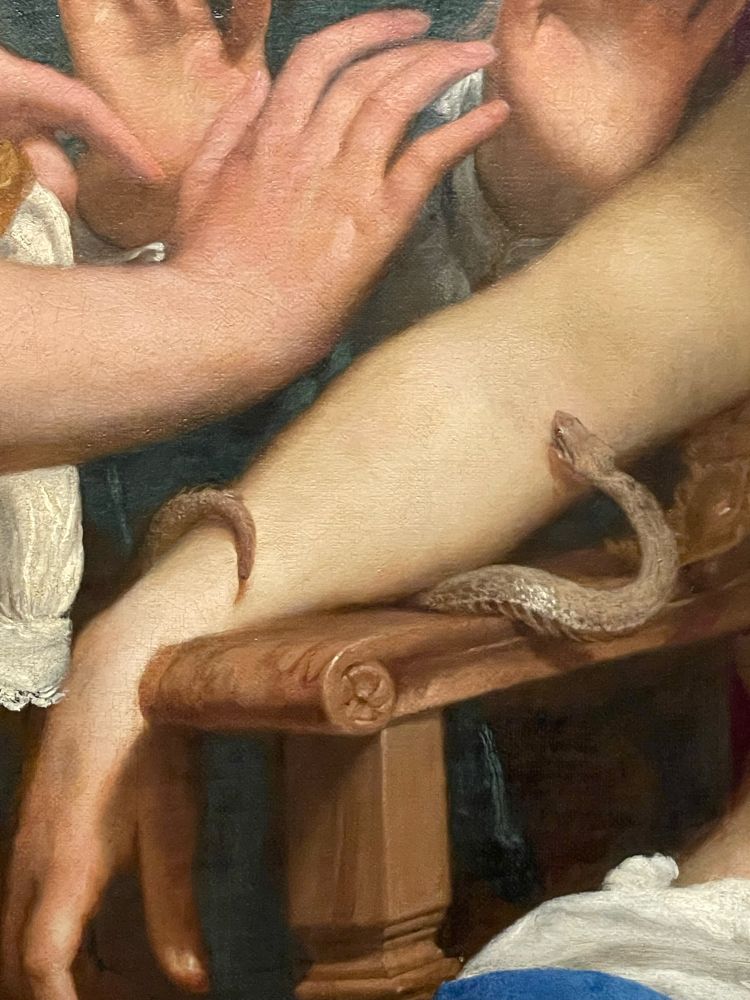
Biologist at The Australian National University.
Previously at NHM London.
http://www.iangbrennan.org/
I don’t know. But Mitzy Pepper does, and she’s going to tell us as part of the Open Consortium of Squamate Genomics upcoming talk this Thursday at 9am Canberra time (AEDT).
Interested in joining?

I don’t know. But Mitzy Pepper does, and she’s going to tell us as part of the Open Consortium of Squamate Genomics upcoming talk this Thursday at 9am Canberra time (AEDT).
Interested in joining?
The Open Consortium on Squamate Genomics has a presentation by Arthur Georges (Uni Canberra) on Telomere-to-Telomere reptile genomes, this morning at 9am AEST.
Join us for some dragon chat!
bsky.app/profile/bren...

The Open Consortium on Squamate Genomics has a presentation by Arthur Georges (Uni Canberra) on Telomere-to-Telomere reptile genomes, this morning at 9am AEST.
Join us for some dragon chat!
bsky.app/profile/bren...
Sylvagemma
Teretistes
Viridihyla

Sylvagemma
Teretistes
Viridihyla
Rawlinsonia
Rhyaconastes
Sandyrana




Rawlinsonia
Rhyaconastes
Sandyrana
Pengilleyia
Pelodryas
Spicicalyx
Papuahyla




Pengilleyia
Pelodryas
Spicicalyx
Papuahyla
Megatestis
Melvillihyla
Mosleyia
Nasutibatrachus
Nyctimystes




Megatestis
Melvillihyla
Mosleyia
Nasutibatrachus
Nyctimystes
Ischnohyla
Kallistobatrachus
Lathrana
Leptobatrachus
Litoria !




Ischnohyla
Kallistobatrachus
Lathrana
Leptobatrachus
Litoria !
Drymomantis
Dryopsophus
Eremnoculus
Exedrobatrachus
Exochohyla




Drymomantis
Dryopsophus
Eremnoculus
Exedrobatrachus
Exochohyla
Amnihyla
Colleeneremia
Coggerdonia
Carichyla
Chlorohyla




Amnihyla
Colleeneremia
Coggerdonia
Carichyla
Chlorohyla


Here's just a couple:
Megatestis: "mighty/marvelous testicles". Big aquatic treefrogs that can float around on their nards.
Nasutibatrachus: little frogs with a big nose.
Spicicalyx: fun to say. Named for their spiky heels.



Here's just a couple:
Megatestis: "mighty/marvelous testicles". Big aquatic treefrogs that can float around on their nards.
Nasutibatrachus: little frogs with a big nose.
Spicicalyx: fun to say. Named for their spiky heels.
1. Mahonabatrachus timida
2. Pelodryas splendida
3. Exochohyla prora
4. Ranoidea raniformis
5. Nyctimystes pulcher
6. Mosleyia nannotis
7. Cyclorana platycephala
8. Litoria nasuta


1. Mahonabatrachus timida
2. Pelodryas splendida
3. Exochohyla prora
4. Ranoidea raniformis
5. Nyctimystes pulcher
6. Mosleyia nannotis
7. Cyclorana platycephala
8. Litoria nasuta
Instead, they've evolved to live in deserts (Pelodryas), fast flowing streams (Mosleyia), burrow underground (Cyclorana), float in billabongs (Megatestis), and in claim every outback toilet and shower.

Instead, they've evolved to live in deserts (Pelodryas), fast flowing streams (Mosleyia), burrow underground (Cyclorana), float in billabongs (Megatestis), and in claim every outback toilet and shower.
I know what you're saying right now, "that's a lot of genera". But hear us out, there's a lot of diversity to know and love, let me show you...

I know what you're saying right now, "that's a lot of genera". But hear us out, there's a lot of diversity to know and love, let me show you...
Time for some taxonomic work!
Pics of:
Cyclorana occidentalis
Nyctimystes eucavatus



Time for some taxonomic work!
Pics of:
Cyclorana occidentalis
Nyctimystes eucavatus
Recently we published a paper on the phylogenetics and taxonomy of Australia and New Guinea's tree frogs, the Pelodryadidae.
Link here: tinyurl.com/4udpmxsm
What does this mean for you Litoria-lovers?
There's a whole bunch more names to use!
Let me explain ...

Recently we published a paper on the phylogenetics and taxonomy of Australia and New Guinea's tree frogs, the Pelodryadidae.
Link here: tinyurl.com/4udpmxsm
What does this mean for you Litoria-lovers?
There's a whole bunch more names to use!
Let me explain ...
Sure, you might find Heteronotia under actual garbage, but they’ve got secrets!

Sure, you might find Heteronotia under actual garbage, but they’ve got secrets!
Have this gecko with a hilariously big head (Tarentola chazaliae).

Have this gecko with a hilariously big head (Tarentola chazaliae).

Cagnacci’s ‘The Death of Cleopatra’ (1659).
Cleopatra famously died from the bite of an asp, possibly an Egyptian cobra (Naja). But here, it looks like a viper, maybe one of the Vipera species?


Cagnacci’s ‘The Death of Cleopatra’ (1659).
Cleopatra famously died from the bite of an asp, possibly an Egyptian cobra (Naja). But here, it looks like a viper, maybe one of the Vipera species?
First up: Peter Paul Rubens’s ‘Head of Medusa’ (1618).
Clearly European because it has a fire salamander (Salamandra), grass snakes (Natrix), and maybe a smooth snake (Coronella)?
What else?



First up: Peter Paul Rubens’s ‘Head of Medusa’ (1618).
Clearly European because it has a fire salamander (Salamandra), grass snakes (Natrix), and maybe a smooth snake (Coronella)?
What else?

